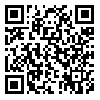BibTeX | RIS | EndNote | Medlars | ProCite | Reference Manager | RefWorks
Send citation to:
URL: http://jdisabilstud.org/article-1-3082-en.html
2- Associate Professor, Department of Counseling, Faculty of Humanities and Social Sciences, Ardakan University, Yazd, Ardakan, Iran
3- Assistant Professor, Department of Psychology, Faculty of Humanities and Social Sciences, Ardakan University, Yazd, Ardakan, Iran
Abstract
Background & Objectives: The significance of marital infidelity can be seen in the prevalence and growth of this phenomenon among different communities. Extramarital relationships have various causes that have drawn the attention of many researchers. They believe a comprehensive understanding of infidelity and its interactions with the surrounding environment requires examining the related factors. Due to the potential negative effects of infidelity on relationship stability and individual well–being, many researchers have attempted to identify factors that expose individuals and couples to the danger of betrayal. However, limited studies explored the consequences of betrayal and mentioned the strategies for this problem. Therefore, this qualitative research investigated the lived experiences of marital infidelity, focusing on outcomes and strategies in Yazd City, Iran.
Methods: The current research used a qualitative analysis and was conducted from September 2021 to March 2022. The research community comprised married people who had been referred to the judiciary of Yazd Province due to the issue of marital infidelity, and their cases had been referred to family counseling centers in Yazd City. The inclusion criteria were visiting family counseling centers due to marital infidelity during the study and providing informed consent to participate. In the present study, 15 people were selected using purposeful sampling and interviewed. The method of data collection in the present study was a semi–structured interview. The interview questions included demographic information and questions about marital infidelity. In the present study, a non–software method was used for data analysis. After collecting the data, the axial coding method was used to categorize the data, and the semantically similar contents were placed under the same codes. Finally, the consequences and strategies of marital infidelity were extracted.
Results: In the present study, 11 women and 4 men were interviewed. The minimum and maximum ages were 23 and 55 years for women and 19 and 33 years for men. Regarding the number of children, 6 people had one child, 5 had two children, 3 had no children, and one was pregnant at the time of the interview. According to the findings, the minimum and maximum duration of marriage was 2 and 23 years for women and 1 and 12 years for men. The strategies extracted from the interviews in the present study were identified under three main concepts: inspection of the spouse, getting discouraged, and revenge infidelity. Also, two main concepts were obtained for the consequences of marital affairs: disclosure of infidelity and satisfaction of needs by the new partner.
Conclusion: According to this research, betrayed people try to control the betrayer in some ways, sometimes by inspecting their spouses and sometimes by revenge betrayal or even discouragement.
| Rights and permissions | |
 |
This work is licensed under a Creative Commons Attribution-NonCommercial 4.0 International License. |




